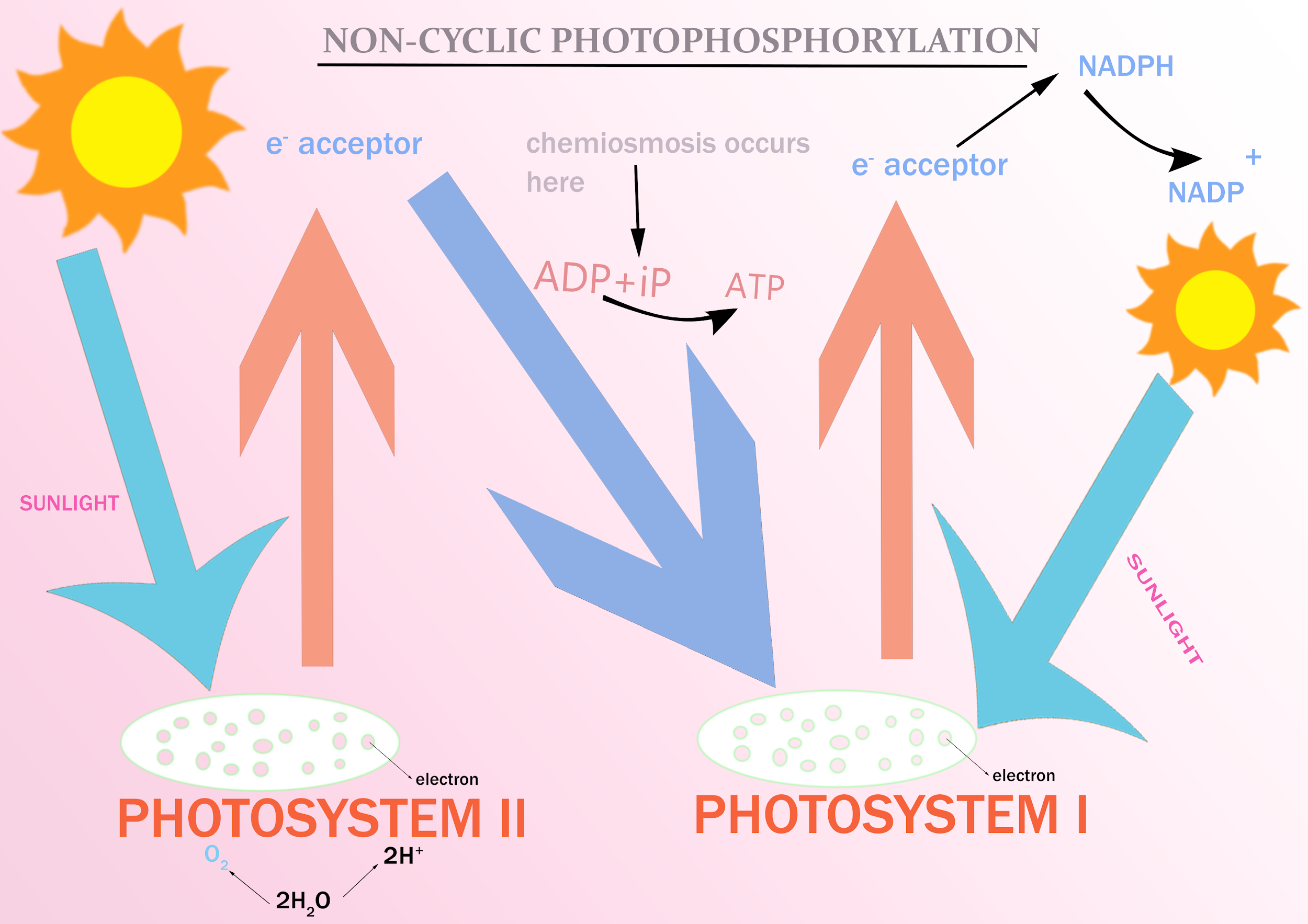
NADP reduces to
A. PS- I
B. PS- II
C. Calvin cycle
D. Non-cyclic photophosphorylation
Answer
514.2k+ views
Hint: Reduction of NADP to
Complete answer:
The non-cyclic photophosphorylation is known as Z-scheme and it involves both PS-I and PS-II photosystems.
The reduction of NADP to
Additional Information:
The steps involved in non-cyclic photophosphorylation are as follows:
-Absorption of light energy of specific wavelength by the chlorophyll and accessory pigments. These pigments absorb energy and transfer it to the reaction center of PS- II P680. This results in photoexcitation of the P680 reaction center and it discharges one electron which is passed to a pigment named pheophytin.
-This loss of electron is compensated by absorbing electrons released during the photolysis of water.
-After passing through a series of carriers plastoquinone, cytochromes,
-P700 releases this electron on absorbing light energy of a suitable wavelength.
-This electron is transferred through several quinones, FeS complexes, Ferredoxin, and NADP reductase.
So, the correct answer is, ” NADP reduces to
Note: It should be noted that the PS- I and PS- II photosystems are named just in the order in which they were discovered. In cyclic photophosphorylation of PS-I is involved but both photosystems are involved in the non-cyclic type of photophosphorylation. In the non-cyclic type of photophosphorylation both ATP and NADPH are formed, which are considered as assimilatory power, but in the cyclic type of photophosphorylation only ATP formation takes place.

Complete answer:
The non-cyclic photophosphorylation is known as Z-scheme and it involves both PS-I and PS-II photosystems.
The reduction of NADP to
Additional Information:
The steps involved in non-cyclic photophosphorylation are as follows:
-Absorption of light energy of specific wavelength by the chlorophyll and accessory pigments. These pigments absorb energy and transfer it to the reaction center of PS- II P680. This results in photoexcitation of the P680 reaction center and it discharges one electron which is passed to a pigment named pheophytin.
-This loss of electron is compensated by absorbing electrons released during the photolysis of water.
-After passing through a series of carriers plastoquinone, cytochromes,
-P700 releases this electron on absorbing light energy of a suitable wavelength.
-This electron is transferred through several quinones, FeS complexes, Ferredoxin, and NADP reductase.
So, the correct answer is, ” NADP reduces to
Note: It should be noted that the PS- I and PS- II photosystems are named just in the order in which they were discovered. In cyclic photophosphorylation of PS-I is involved but both photosystems are involved in the non-cyclic type of photophosphorylation. In the non-cyclic type of photophosphorylation both ATP and NADPH are formed, which are considered as assimilatory power, but in the cyclic type of photophosphorylation only ATP formation takes place.

Recently Updated Pages
Master Class 11 Business Studies: Engaging Questions & Answers for Success

Master Class 11 Economics: Engaging Questions & Answers for Success

Master Class 11 Accountancy: Engaging Questions & Answers for Success

Master Class 11 Computer Science: Engaging Questions & Answers for Success

Master Class 11 English: Engaging Questions & Answers for Success

Master Class 11 Maths: Engaging Questions & Answers for Success

Trending doubts
The flightless birds Rhea Kiwi and Emu respectively class 11 biology CBSE

1 litre is equivalent to A 1000mL B 100cm3 C 10mL D class 11 physics CBSE

A car travels 100 km at a speed of 60 kmh and returns class 11 physics CBSE

Name the Largest and the Smallest Cell in the Human Body ?

Explain zero factorial class 11 maths CBSE

In tea plantations and hedge making gardeners trim class 11 biology CBSE




